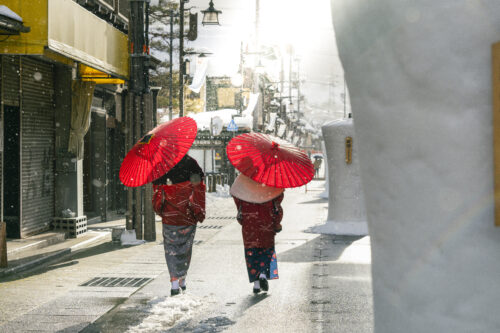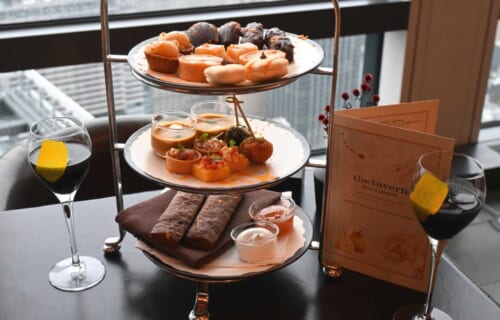When we think of Japanese food, rice is undoubtedly the first thing that comes to mind, not bread. Rice has been a staple of Japanese cuisine for centuries, but in recent decades, bread has become an increasingly popular part of the daily diet. In fact, since 2011, Japanese households have been spending more on bread than on rice according to a survey from the Japanese Internal Affairs Ministry. Japanese bakeries, known as pan-ya, offer a fascinating blend of culinary traditions. Unlike our typical idea of a “bakery,” they feature various products that combine Western techniques with local ingredients, often in unexpected ways.
Do They Have Bakeries in Japan?
Japan is known for its ability to adapt concepts and trends from foreign cultures to its own, often refining and enhancing them. This is exactly what has happened with bread. Since its introduction, Japanese bakers have continuously experimented, creating original products and recipes and reimagining the bakery as a unique place.
Baking has become such a refined art in Japan that it is gaining popularity abroad, with Japanese-style bakeries opening in Western cities. But when did bread first arrive in Japan?
Brief History of Bread in Japan
Bread first arrived in Japan in the 16th century on Portuguese ships carrying Christian missionaries, goods, and weapons. The Japanese word for bread, pan (パン), actually comes from the Portuguese word pão. However, it wasn’t until the Edo period, during the Opium Wars in China, that bread began to be produced on a larger scale to sustain military troops. With the opening of Japan’s borders and Westernization during the Meiji Restoration, bread increasingly became part of the Japanese diet. It became a common food after WWII, thanks to large quantities of wheat sent as aid to the war-torn population.
Historically, Japanese baking has been primarily inspired by French traditions. The first baguettes appeared in 1888 with the opening of Sekiguchi Furansu Pan, Tokyo’s first authentic French bakery. At the same time, Japanese bakers began experimenting and creating unique types of bread that incorporated local ingredients and culinary traditions. The first example is anpan, invented by a former samurai who opened his Bun’eido bakery (later known as Kimuraya) in 1871.
Original Japanese recipes, often sweet, showcased a different idea of bread, viewing it more as a standalone snack than a meal accompaniment. In recent years, the French influence has been complemented by inspiration from northern Europe, introducing cinnamon rolls, strudels, and rye bread.
How to Shop in Japanese Bakeries
Most bakeries in Japan use a “self-service” system. When you enter, you take a tray and special tongs to help yourself from the variety of bread displayed on the shelves. Once you’ve filled your tray, head to the checkout, where your selections are wrapped for takeout — alas, this often results in a considerable amount of paper or plastic waste.
Many bakeries also double as cafés. You can order a drink at the counter and enjoy your light meal at a table. Keep in mind that most bakeries in Japan open around 10am, as people typically buy bread for lunch or an afternoon snack. Few places, especially those near train stations, open earlier and offer a breakfast menu.
Bakeries come in various types, from the popular and budget-friendly chains often found in train stations to the artisanal and trendy ones offering carefully selected products and ingredients at a higher price point. You can also find bread outlets within food courts in department stores.
The Most Popular Japanese Breads to Try
There are many Japanese bread types to choose from, leaving you spoilt for choice. But which ones are must-tries? Japan has several original bread recipes tailored to local tastes, and many of them fall into the categories of kashi-pan or sozai-pan. Kashi-pan refers to sweet bread, while sozai-pan is bread stuffed with savory ingredients.
Now, let’s introduce the classics in both categories. These bread types are so popular that you can find them in bakeries and packaged, processed versions at konbini (convenience stores) and supermarkets.
Anpan
Anpan (あんパン) is a soft, sweet, round bun filled with anko (sweetened red azuki bean paste) and often topped with sesame or poppy seeds. The filling’s texture can vary from smooth and creamy (koshian) to chunky with pieces of azuki beans (tsubuan). Anpan holds a special place in Japanese culture, to the point of inspiring a beloved children’s cartoon character, Anpanman. Some bakeries even offer anpan buns shaped like the character’s face.
Kuriimu Pan
As the name suggests (kuriimu comes from “cream”), kuriimu pan (クリームパン) is a soft sweet bun similar to anpan but filled with custard. It usually comes round or in a half-circle shape with grooves, almost like a fan.
Melon Pan
Melon pan (メロンパン) is a sweet bun with a soft dough, topped with a crunchy layer cut into squares. Despite its name, melon pan is not flavored with melon; rather, the name probably comes from the texture of the covering, which looks like that of a melon’s skin.
Karee Pan
Karee pan (カレーパン) is a leavened bun filled with Japanese-style curry, coated in panko (Japanese breadcrumbs), and fried until golden and crispy. The result is a yummy savory snack!
Yakisoba Pan
A combination of bread and the classic Japanese street food of yakisoba, yakisoba pan (焼きそばパン) is a soft, elongated bun (similar to hot-dog buns) cut in half and stuffed with yakisoba, stir-fried noodles with meat, vegetables, and the typical thick, sweetish sauce.
Shokupan
Not exactly fitting into the categories of kashipan or sozaipan, shokupan (食パン, literally “meal bread”) is a simple white milk bread loaf. Western in origin, the dough was later refined to suit local tastes, resulting in a fluffy, soft texture and a delicate and mildly sweet flavor. It’s usually sold pre-sliced in thick cuts and can be enjoyed as is or toasted.
Besides the classics we’ve covered, several other types of Japanese bread are waiting to be discovered. So, our suggestion for your next trip to Japan is simple: step into a bakery, grab a tray and tongs, and let yourself indulge! Psst, here’s a little secret: if you find yourself at Kyoto Station, make sure to stop by Sizuya Bakery and try my personal favorite, the milky miruku buran that simply melts in your mouth.











No Comments yet!